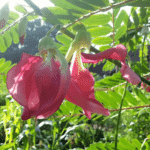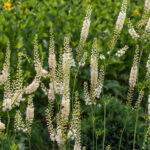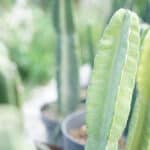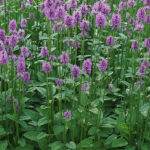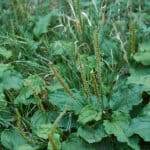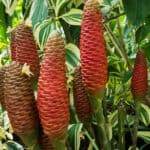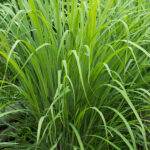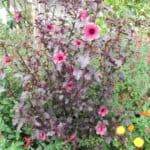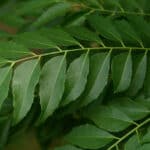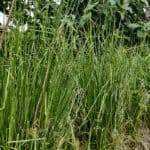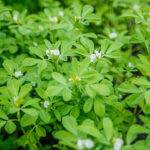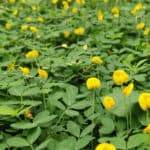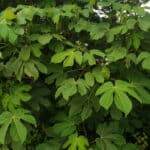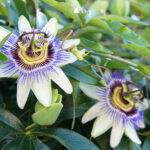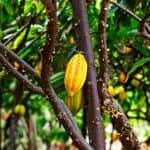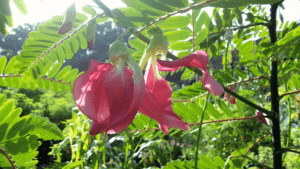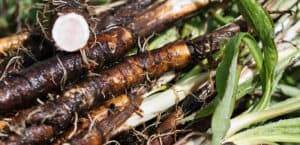Beyond Medicinal Blessings; The Regenerative Side of Giloy
Tinospora cordifolia is a perennial herbaceous vine belonging to the family Menispermaceae. It is indigenous to the Indian subcontinent and thrives in a tropical climate and in dry and deciduous forests. It is also found in Bangladesh, China, Sri Lanka and Myanmar.
In India, people have been growing it in their gardens and urban spaces. The bark is consumed in form of juices and decoctions that are bitter and pungent in taste.
It’s called “Guduchi” in Sanskrit, ‘Gulvel’ in Marathi, ‘Amritavali’ in Malayalam, ‘Gurjo’ in Nepali, and many more. All of these names are translated along the lines of heavenly nectar that protects the whole body and immortality.

The leaves are alternate, heart-shaped, and simple. The vine is glabrous, woody, succulent and grows vigorously once established. The male and female flowers grow on separate plants, and the pollination is done by insects. They are greenish yellow, and the fruits are red in color.
Guduchi can be found growing wild in tropical forests and on abandoned properties. It can also be seen crawling up high on trees and trellis. In urban spaces, it sometimes crawls up electric wires as well which becomes an issue and thus needs to be pruned from time to time.
In uncultivated zones, the seeds are dispersed by birds, animals, and insects or by gravity.
During the pandemic, Giloy rose to fame in Inda as people started searching for homemade immunity boosters and suddenly, the consumption and planting guides and tips were all over the internet and social circles.
Regenerative Properties of Giloy
Shade Provider
It can be channeled on the trellis to create natural shade. In India, it’s used to cover the sunny sides of houses or outdoor areas to create a cooling effect by filtering the sun’s rays.
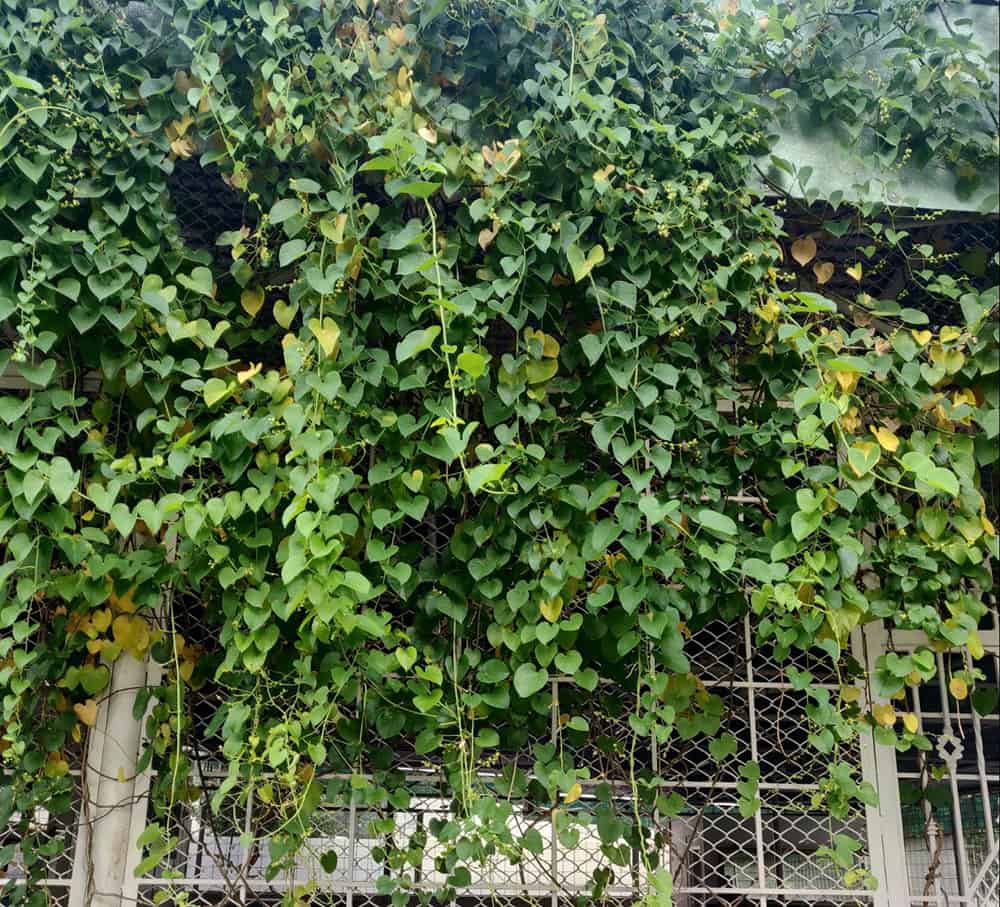
Hedges and Living Fences
It propagates via fallen fruits and keeps spreading with the help of aerial roots making a thick hedge and thus can be planted in between other plants to fill in spaces and create a privacy barrier in your live fence or hedge.
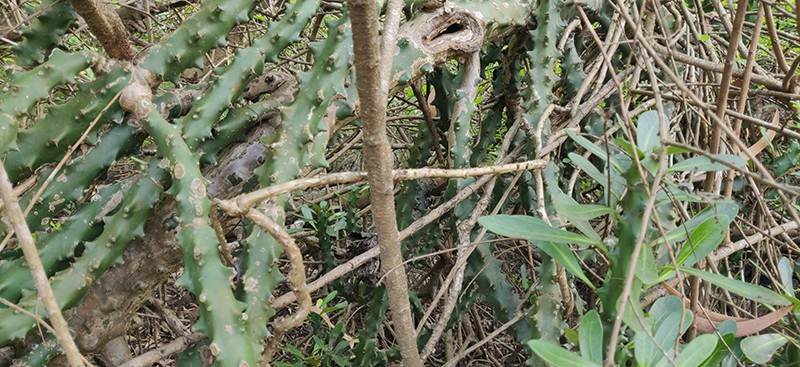
Above is a picture of giloy vines growing along with cacti and other plants in a live fence at our farm, the vines are helping add more mass to the fence, strengthening it and weaving the fence altogether as one.
Fire Break
The stem being succulent and juicy, acts as a fire break due to resistance towards catching fire. The plant stores moisture in its stem even when it loses all of its leaves.
Minimal Maintenance
Once established the vine needs zero human intervention (unless it’s suffocating your trees or climbing up electric poles) making it an energy-efficient and zero-budget addition to your farm.
Medicinal Properties
All parts of the plant are used in traditional medicine however the stem is the most widely used part. It is a well-known ethnomedicine in Ayurveda known for its immunomodulatory properties and active compounds like alkaloids, glycosides, lactones, steroids and more
Propagating Guduchi from Cuttings
Guduchi can be grown easily from cuttings and can also be grown in pots at home or directly on your farm. The cuttings stay viable long post cutting and separating from the plant for 10 to 15 days, thus feel free to share or get them couriered over longer distances.

Select a mature vine and cut 6 to 10-inch long pieces, ensuring that every piece has at least 2 to 3 nodes.
Plant them individually in well-draining potting mix-filled pots or nursery bags.
The cuttings can tolerate degraded soils as long as the soil drains well with some moisture retention.
Propagation Tip: Many times you might receive the cutting in random order or might forget which side is supposed to be in the soil.

In such cases, simply make loops like this and bury both ends in the soil with nodes facing up, above the soil.

Water just enough to moist the soil, do not overwater or the cutting will rot.
Selection Tip:
If you are trying to identify this plant by yourself for the first time then make sure to look at the plant closely as many creepers also have heart-shaped leaves. Initially, t’s recommended to source it from someone who knows this plant.
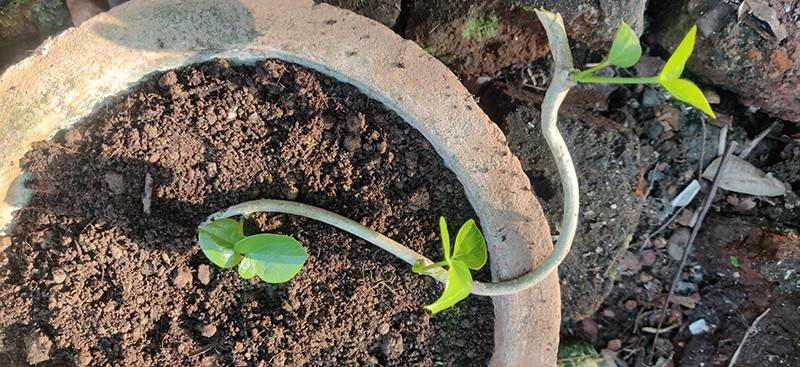
Transplant once 3-4 new leaves are established from the nodes.
Site Selection and Plant Care
Any well-draining spot in your garden works. It can tolerate diverse soil ph and nutrient-deficient soils.
When young and newly transplanted, it needs watering, a good balance between not too dry vs overwatering however once established, the plant can do with minimal watering (only during dry seasons) or no watering at all in tropical zones.
Plant near an existing tree, fence or trellis. It can be planted indoors as well, choose a spot that receives at minimum 4 hours of sun. Mulch around the base for moisture retention. It sends out aerial roots to support itself in later phases and becomes absolutely self-sufficient.
The established vines are vigorous and keep climbing higher, taking over trees and at times suffocating the ones who cannot keep up with limited sunlight. Especially when introduced as a foreign species, it’s important to keep checking on them and change location if a certain tree seems to be taken over as here in native zones, the vine and trees exist together without competition.
It’s not vulnerable to pest attack once established however is susceptible to molds in case of high humidity and lack of aeration and sunlight when newly transplanted.
Interesting Fact: In India, it is planted beside Neem trees and the medicine from these plants is considered the best and is believed to have higher medicinal properties.
Importance in Traditional Medicine
Giloy is recommended under the list of herbs for healthy immune function in Ayurveda to combat acute and chronic inflammation and promote a balanced immune response. It has antibacterial, anti-inflammatory, and anti-viral properties.
Stem decoction is used for treating allergies, it helps lower the sneezing, itching, and runny nose-like symptoms of allergies.
For treating wounds, the leaves are crushed and warmed over a low flame and placed over the wound.
It is said to have anti-cancer properties as well.

Another way of consumption is in form of Satva, a herbal powder made from stem starch.
The process: The stem is chopped into 1 to 2 inch-long pieces, they are soaked in water overnight for about 10-12 hours. The next morning the mushy stem are rubbed and squeezed to extract starch post which the water is filtered to separate the woody pieces and skin if any. The water is then allowed to stay still until the white particles settle down at the bottom of the vessel. The clear water is discarded carefully and the white sediment is collected on a tray or cloth and dried in shade.
The dried powder is the satva which is consumed as per the guidance of an ayurvedic doctor for treating different conditions.
It is traditionally used to treat fever, anemia urinary problems, asthma dysentery diarrhea skin infections, jaundice, anorexia, and eye conditions.
It is used in Ayurveda to reduce blood glucose levels, thus helping diabetic patients. Regular monitoring is recommended to prevent blood sugar drops beyond the normal range.
Quick Consumption: Giloy-infused water is made by soaking 1-2 chopped pieces in water overnight and consumed early morning.
Consumption Concerns
Being an immunomodulator, people with underlying conditions like severe allergies, autoimmune disorders and more need to consult experts as there can be chances of overstimulation of the immune system, this has been observed in some cases, you can read more about it via this article – link
Also, a lot of commercial juices and tonics are also available in the market however we need to be careful while consuming, remembering that it’s a potent resource that should be consumed in an appropriate dose as prescribed by a qualified physician to get medicinal effects.

Closing Thoughts…
Overall, this pretty-looking Heart-leaved moonseed is worth considering for fencing properties with degraded soil conditions and for shade. It’s can be a great addition to your low-maintenance or zero-budget farming goals.
Remember that it can go invasive and suffocate fruit trees in non-native zones, thus, like any new species that you introduce, observe its behaviors and limitations before letting it grow wild and crazy. Plant on trellis before introducing it to wild zones.
Unlike any other medicinal plant, it comes with age-old wisdom, benefits and responsibilities. Thus it becomes important to understand the properties of this plant before including it in your diet or using it as a medicine.
The most important being, introducing it slowly in limited quantities and carefully observing the effects, both on land and as medicine.

